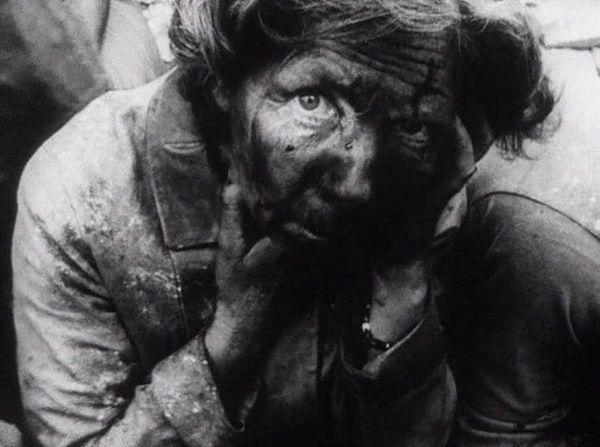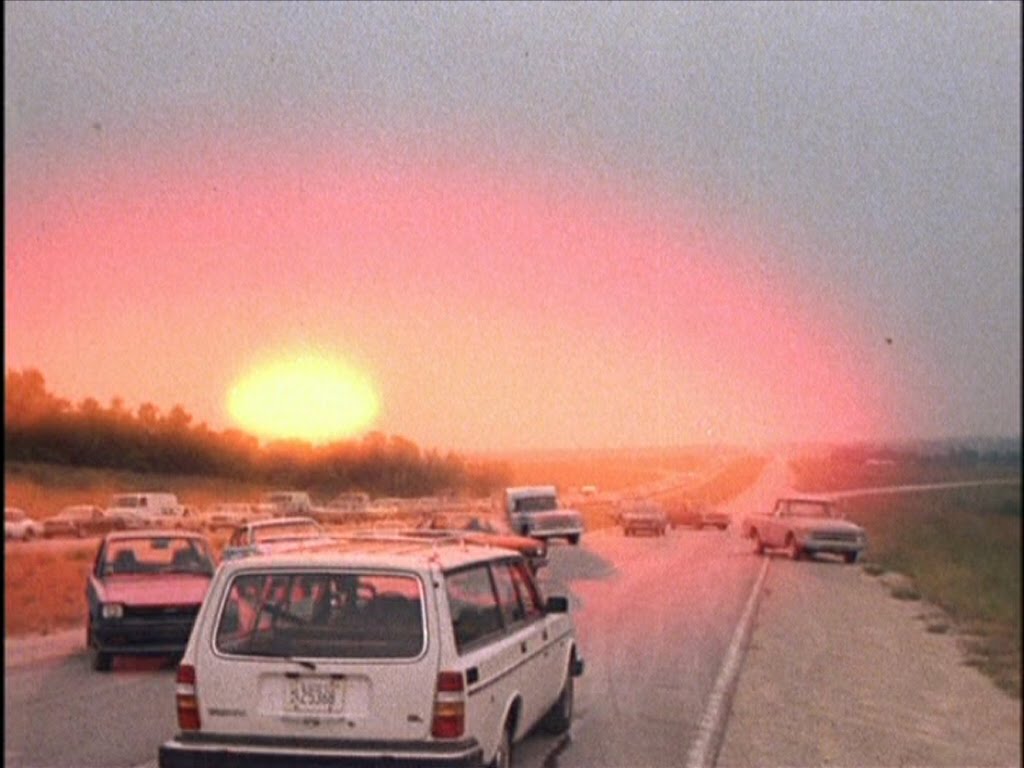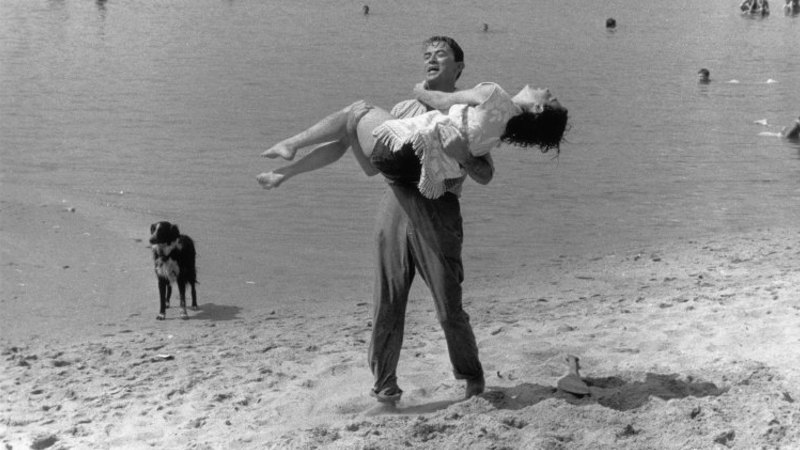One day when I was in first grade, our teacher stopped class and let us know we were about to practice a different type of safety drill. I was well experienced by that point with fire drills and tornado drills, so I didn’t think anything of it. This drill, my teacher said, was like a tornado drill, but not exactly. Like a tornado drill, it involved getting down on the floor and putting our hands over our heads. Unlike the tornado drill, though, we wouldn’t be moving out into the hallway and huddling tightly beside one another. Instead, we would just get underneath of our desks—just duck down and cover our heads.
It wasn’t until years later I learned I was among the last group of children in the United States to practice an air raid drill. Along with that revelation came a lifelong obsession with the idea of the nuclear apocalypse—particularly the pop culture that rose up around it. Perhaps at no other point in history did mankind come as close to the brink of extinction as it did during the Cold War, and the films produced by that era carry with them a uniquely uncanny quality. I’m not talking about post-apocalyptic fantasies like MAD MAX—I mean the rough, gritty, “this could happen here” subgenre that came on the scene in the 1960s and endured until détente in the 1980s. As the situation in Eastern Europe intensifies, I’ve been thinking back on those movies, and on that bomb drill, and how out of a life of nearly 37 years now I got a good seven where the fear of a Cold War-style all-out nuclear apocalypse wasn’t one of my many, many paranoid fears. With Russia sending demarches to the United States now and the invasion of Ukraine intensifying in its mindless brutality (please consider donating HERE), it feels like we’re back to where we were circa the Reagan era, where the sound of air raid sirens could fill the air at any moment. In following the grand tradition of facing our fears head-on by watching movies that look at what the reality of those fears may look like, here’s a list of the most patently disturbing nuclear apocalypse films. They still carry a wallop, especially in the current socio-political climate, and they’re good for a healthy dose of The Fear—and a reminder of our own flimsy mortality.
ON THE BEACH (1959)
Arguably the progenitor of the subgenre, ON THE BEACH is unique from its’ spawn in that the bombs have already dropped when we join its’ doomed cast. As a result, it’s clear from the outset that our heroes—a disparate group of people living in Australia, the last place left unaffected after World War III destroyed the rest of the planet—won’t bet getting any happy endings. They’re confined to a finite landmass with limited resources, and trade winds are bringing a big ol’ cloud of fallout south very quickly. Though a US submarine crew thinks they may have found signs of life in California, their mission back home only underscores the bleakness of the situation: the apparent Morse code distress signal turns out to be a windblown soda bottle hitting a telegraph key. The climax is a grim memento mori as the crew returns to Australia to deliver the bad news, setting off a spate of suicides and last-days-of-Rome reveling that culminate in a quiet, sober shot of Melbourne confirming the extinction of humanity. More than any of the movies that followed, ON THE BEACH exemplified what would become the over-arcing theme of the nuclear apocalypse movie: futility.
FAIL SAFE (1964)

FAIL SAFE is a practice in “for want of a nail” fatalism. After radar mistakes an off-course commercial airliner for a Soviet bomber, an Air Force squadron is dispatched to Russia to drop a nuclear bomb. The President (Henry Fonda) learns of the error early in the movie, and the tension—and dread—mounts as it slowly becomes apparent that there’s nothing anyone can do to prevent the strike: counter-measures have been put into place to stop Soviet interference with the mission, and even when the White House is able to contact the commander, he assumes that it’s a ruse by the Kremlin and proceeds to obliterate Moscow. The President’s ultimate compromise with the Soviets is nightmarish in its’ pettiness and pointlessness, and the final seconds of the film—depicting a series of freeze-frames representing the moment of death for a variety of average people going about daily life—are a brutal stinger worthy of Hitchcock.
THE WAR GAME (1965/1985)

The closest entry on this list to an all-out horror film, THE WAR GAME is a mockumentary that purports to document the lead-up to and aftermath of a Soviet attack on the UK. Shot in stark black and white, GAME is chilling for director Peter Watkins’ perfectly detached approach; moreso than any contemporary found-footage movie, it just feels real. He takes incredible pains to maintain the suspension of disbelief throughout, and the result is absolutely harrowing; I had to stop it during my first viewing just to remind myself this never happened. It’s no wonder the BBC decided to pull the film before its premier, an act that prompted parliamentary investigation into accusations of censorship (the outcome: yes, it was censorship, but, considering the content, that was a good thing). Though it inexplicably won the Academy Award for Best Documentary despite virtually no one actually seeing it, The War Game wouldn’t be shown for twenty years, following an airing of THREADS (see below).
THE DAY AFTER (1983)

The most influential entry on this list, President Reagan wrote in his diary how much the film disturbed him, and credited it with making him reconsider the aggressive stance he’d taken in his dealings with the USSR. DAY’s shock comes from its’ depiction of the deterioration of American ingenuity and perseverance, as its’ Midwestern protagonists slowly come to realize that none of the things in which they’ve placed their faith—their country, their family values, the traditions of small-town Americana—mean anything in the face of the apocalypse. While ON THE BEACH and FAIL SAFE are centered around military figures and the average citizens of THE WAR GAME are largely anonymous, The Day After has the distinction of deeply humanizing its’ protagonists, and the result is gut-punch after gut-punch as they succumb to radiation poisoning, looters, and simple despair.
THREADS (1984)

Essentially “The Day After in the UK,” Threads ups the dread ante by giving the proceedings a distinctly nihilistic twist as only the English can, putting it comfortably alongside WAR GAME as a contender for a straight-up horror film. While there’s a hominess to the early parts of DAY that functions as a sort of psychic security blanket, THREADS drops us into dismal circumstances from the get-go: our focal characters are Ruth and Jimmy, a pair of mismatched, lower-class kids about to get married due to an unplanned pregnancy. Against the backdrop of this domestic drama, incidental television and radio reports keep the viewer abreast of a growing conflict between the world’s superpowers. When the bombs drop, we’re treated to a full-color reenactment of some of the grizzlier parts of THE WAR GAME, including a cat suffocating in the wake of a bomb blast and human blood boiling in rubble– and things only go downhill from there. Uniquely, the last quarter of the film consists of a mordant coda in which we get to see the multigenerational effects of the bomb, as the audience follows a prematurely aged Ruth and her teenaged daughter navigating the post-apocalypse.
WHEN THE WIND BLOWS (1986)

The Brits were clearly more afraid of the end than the Americans were- or at least they felt more comfortable dialoguing with their potential annihilation via films that blended domestic drama and horror cinema. WIND isn’t only an experimental cartoon (depending on context, the animation fluctuates from 80s Don Bluth style, to Golden Age of animation black and white, to creepy stop-motion), it also boasts a soundtrack by David Bowie, Genesis, and Roger Waters. The film concerns an elderly couple, James and Hilda Boggs, who, having survived The Blitz, think the apocalypse will be a cakewalk. As much a call for peace as an indictment of the British Government (for underplaying the potential devastation of a nuclear attack in their Protect and Survive pamphlets), the horror of WIND comes from the simultaneous sweetness and naivety of its’ protagonists. Though they do survive the initial blast, it quickly becomes clear they’re among the few who did (in a gruesome joke characteristic of the film’s gallows humor, James mistakes the smell of burning flesh for survivors having a barbecue), and though the couple may not recognize the effects of radiation poisoning when Hilda’s hair falls out, the audience does. The Boggs are the kindest characters in the annals of nuclear apocalypse fiction, and their inevitable deaths are among the cruelest: a cold, brutal reminder of the indifference of war.
THE CNN DOOMSDAY VIDEO (1980/????)

Though it’s not a movie per se, this list would be incomplete without a nod to the CNN Doomsday Video. When the network first went live, Ted Turner promised it would stay on until the end of the world. People may have thought it was bravado at the time, but it turned out he was serious: To ensure the network—and mankind—had an appropriate signoff, Turner commissioned an eerie, minute-long video of a band playing Nearer my God to Thee meant to be broadcast to coincide with nuclear missiles decimating the United States. Long thought to be an urban legend until a CNN Intern discovered the grainy footage still preserved in the company’s video archives (accompanied by the coldly blunt instructions, “hold for release till end of the world confirmed”), the video—taken in context—is perhaps one of the most frightening things you’ll ever view: a testament to how close we really came, and a glimpse at what the end may really have looked and felt like. If you’re feeling particularly nihilistic, you can queue it up HERE and have it on standby in case the network decides to go with different content…



No Comments